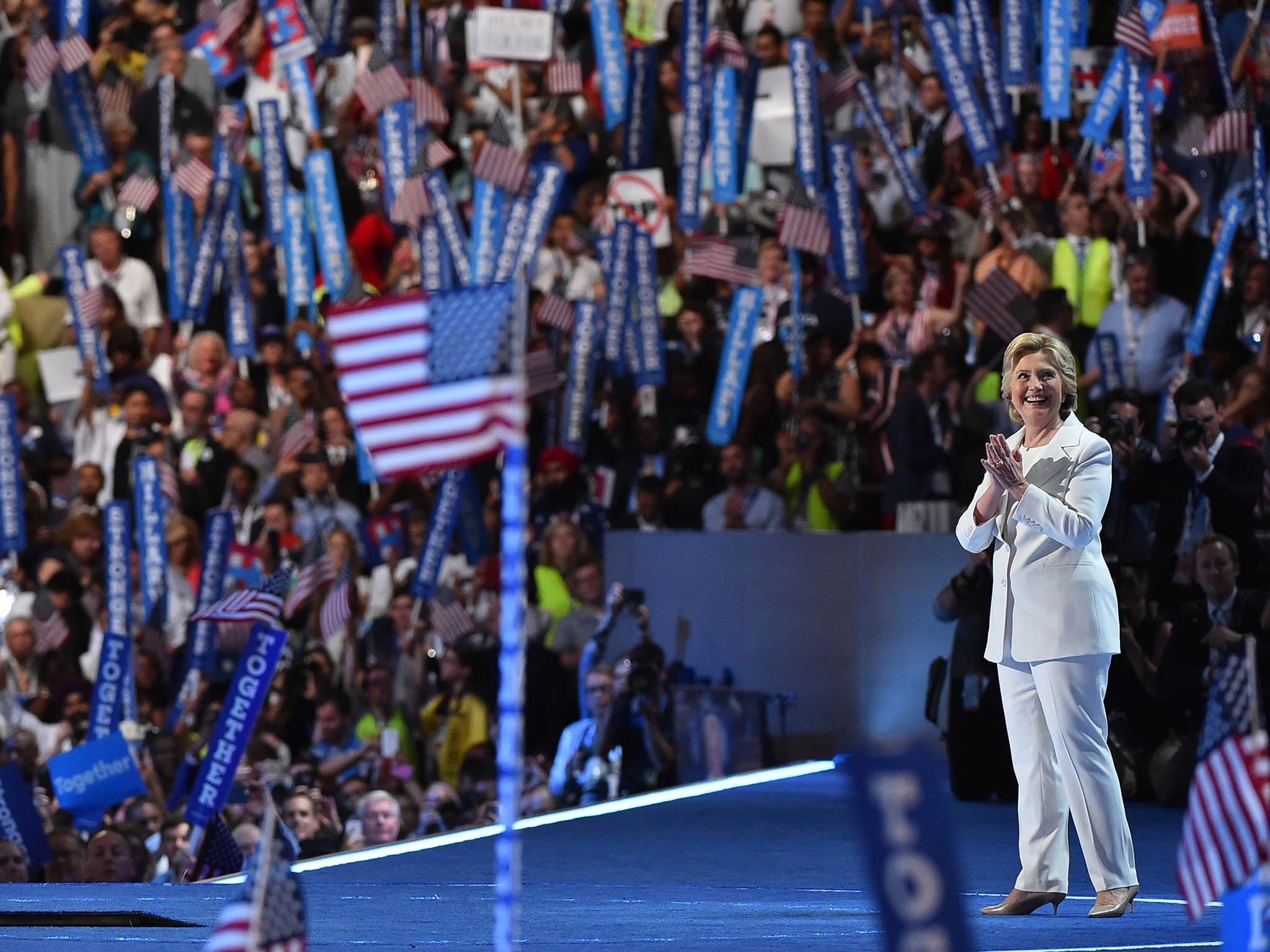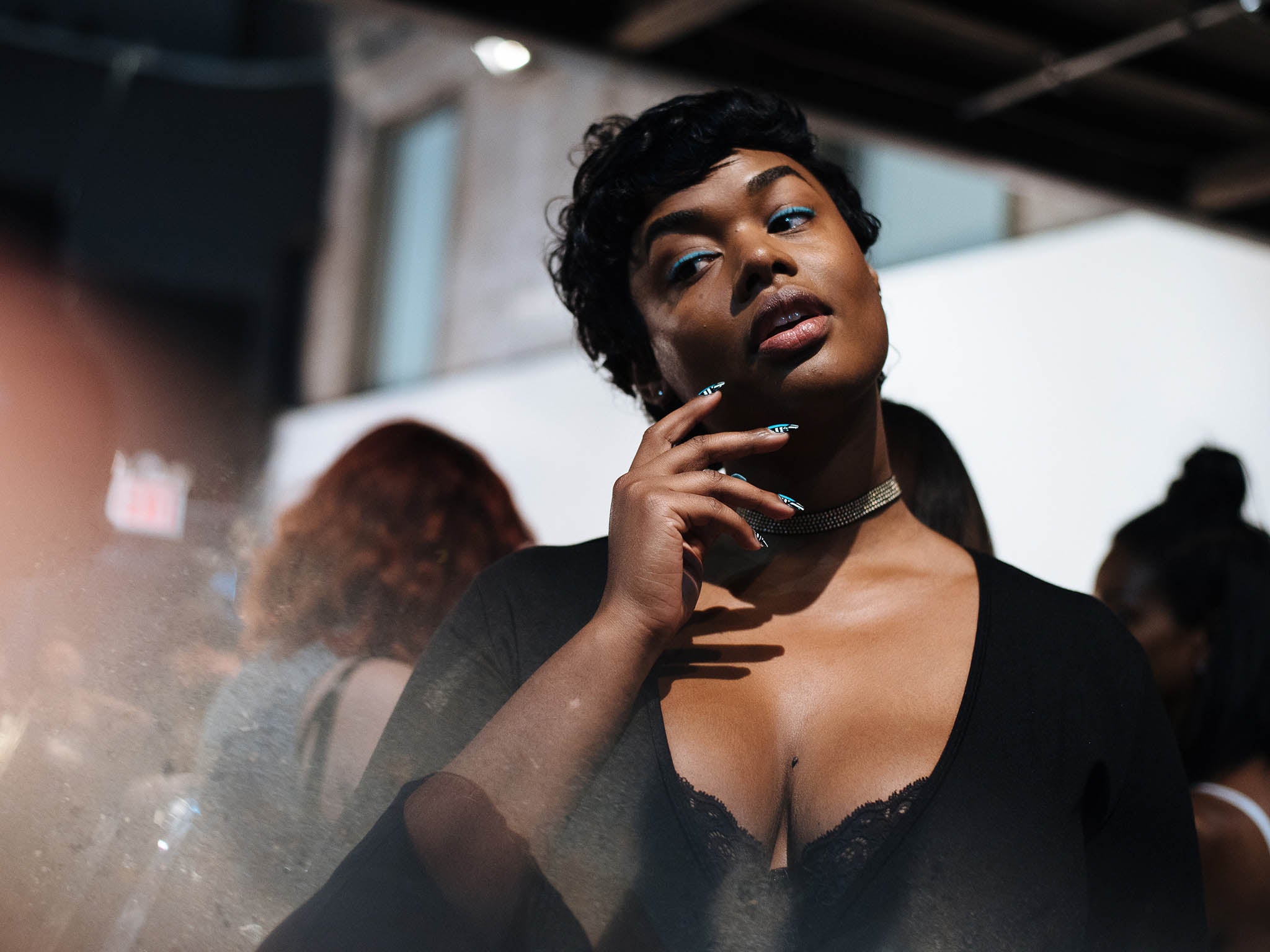How women reclaimed their place in fashion's spotlight in 2016

Your support helps us to tell the story
From reproductive rights to climate change to Big Tech, The Independent is on the ground when the story is developing. Whether it's investigating the financials of Elon Musk's pro-Trump PAC or producing our latest documentary, 'The A Word', which shines a light on the American women fighting for reproductive rights, we know how important it is to parse out the facts from the messaging.
At such a critical moment in US history, we need reporters on the ground. Your donation allows us to keep sending journalists to speak to both sides of the story.
The Independent is trusted by Americans across the entire political spectrum. And unlike many other quality news outlets, we choose not to lock Americans out of our reporting and analysis with paywalls. We believe quality journalism should be available to everyone, paid for by those who can afford it.
Your support makes all the difference.The year in fashion was one in which women made news, for better and for worse, for what they designed, what they wore and what it all said about the role of attire in the broader culture.
It was a year of pantsuits and pussybows, of sheath dresses and sun dresses, of feminism writ large – or spelled out, even, in pointed messages on expensive T-shirts.
Within the fashion industry, women took on leadership roles at design houses at the upper echelons of the business.
Bouchra Jarrar stepped in at Lanvin, for example, and brought boudoir-inspired beauty to a brand that had been roiled by the firing of longtime designer Alber Elbaz. Laura Kim took the reigns at Oscar de la Renta along with fellow creative director Fernando Garcia. Rihanna proved that she – not the voluble Kanye West – was the celebrity who has the sneaker deal, and the real eye for fashion rather than just self-promotion.
And the storied Christian Dior appointed its first female creative director in the label’s 70-year history. In her September debut, Maria Grazia Chiuri, formerly of Valentino, presented fencing-inspired jackets and tulle-embroidered evening gowns – but she also declared the importance of women exerting their power, with the words of feminist author Chimamanda Ngozi Adichie on her show’s soundtrack: “We say to girls: You can have ambition, but not too much. You should aim to be successful but not too successful, otherwise you will threaten the man.”

Her models wore T-shirts declaring: “We should all be feminists.”
Adichie, meanwhile, signed on as the face of British makeup brand No7, making it clear that fashion and feminism are not mutually exclusive. Marc Jacobs sparked an uproar over his use of dreadlocks on the runway when some took offence at what they called cultural appropriation. And then Jacobs’ made the mistake of trying to mansplain black hair to his black female critics. He stood down. Women were taking no guff.
Women and their connection to power was a topic on the mind of New York-based designers in particular. Much of the musing was connected to the presidential campaign of Hillary Clinton, which drew tremendous support from Seventh Avenue, including a fundraising fashion show and a formal endorsement from Vogue magazine. Jacobs declared his support for her with, among other things, a bedazzled T-shirt emblazoned with her image. At the Michael Kors show, singer Rufus Wainwright interrupted his performance to declare: “I'm with her.”
The fascination with female strength was a subtext for many designers as they considered what ultimate power would look like draped around the shoulders of a woman. And in their pursuit of an answer, they sought inspiration from a wide range of influential women, from Georgia O’Keeffe to Gloria Steinem.
Pantsuits took on new meaning, too. They became symbolic of Clinton’s quest to make history as the first female president and on election day, they turned into a proclamation of solidarity. If those suits were white, folks connected them to suffragists. If they were designed by Ralph Lauren, they were met with a nod of aesthetic approval and a sigh of relief from her supporters that maybe, just maybe, she was getting her fashion act together.
All the considered attention paid to assuring that Clinton’s clothes, hair and makeup were just right, stood in contrast to the dishevelled man on the other side of the partisan divide. Donald Trump – the self-professed, uber-successful, billionaire candidate – wore his ill-fitting suits like a declaration of his angry populism. His poorly tied neckwear grazed his crotch. And his use of Scotch tape, in lieu of a tie bar, was the thousandth paper-cut, amid the myriad body blows, to the dignity of the presidency.
President-elect Trump’s most potent surrogate may well have been his daughter Ivanka, who regularly wore sheath dresses from her own fashion company and expressed her concern for the travails of working mothers. Her clothing style was refined professionalism – affordable polyester and discreet darts. Still, her company became a point of contention for its outsourced production, its licensing deal with a firm that fails to live up to her own standards for family leave and its penchant for tweeting advertisements for $10,000 (£8,000) bracelets as-seen-on- “60 Minutes”.
Melania Trump, after the release of an old “Access Hollywood” outtake in which her husband talked about grabbing women by the genitalia, donned a fuchsia Gucci pussybow blouse that had observers wondering: when is a blouse with a bow just a buzzy fashion statement and when is it an ironic cris de coeur?
After the divisive campaign and the fraught election, Sophie Theallet was the first designer to make a public fashion protest: she would not dress Melania Trump during her tenure as first lady. Of course, that’s when most people assumed Melania Trump would slip into that traditional role, one that comes with a host of public appearances on behalf of a Trump administration and the American people. The better question may now be: will Theallet dress the first daughter? Nonetheless, Theallet threw down a gauntlet.
Other designers – Tommy Hilfiger, Thom Browne – have taken a different stance: they would gladly outfit a Trump first lady. But plenty of designers followed Theallet’s lead.
And while an onslaught of publications ably assessed the aftermath of the presidential election, the most surprising was Teen Vogue. Under the leadership of its new editor, Elaine Welteroth, the magazine recently published an essay about the “gaslighting” of America: the demise of fact, the effect of misdirection, the negotiability of truth. It was a reminder that just because a girl cares about glitter Gucci loafers and floral handbags doesn’t mean she isn’t interested in the fate of the democracy as well.

Women made artistic and provocative statements with fashion in 2016, too. The award-winning cinematic images from Beyoncé’s “Lemonade,” used fashion to speak to history, protest, beauty and power. It’s hard to shake the image of the singer in a flowing saffron-coloured, Roberto Cavalli dress taking a baseball bat to the windshield of a car in her performance of “Hold Up”. “What’s worse,” she sang, “Lookin’ jealous or crazy, jealous and crazy?” The dress evoked shipwrecked desperation, beautiful survival and calculated outrage.
Even more striking are the custom, broad-brimmed hats from “Formation” and the medley of romantic white dresses that simultaneously suggest the Old South, the Victorian era and Daughters of the Dust, Julie Dash’s acclaimed indie film about turn-of-the-century Gullah women. In “Lemonade”, fashion is evocative of the past and the present. It is sexy and powerful, personal and political – all the while avoiding cliches.
Fashion was all that in real-life, too. In a serendipitous moment captured in a photograph, a young woman in a filmy summer dress faced down the police during protests in Baton Rouge after the death of Alton Sterling. Her thin dress, shifting in the air, seemed like little protection in the face of armoured police officers. But she stood her ground. Power doesn’t have to mean a tailored suit, a Kevlar vest or state-issued uniform.
In the runway trends of 2016, fashion committed to oversized proportions and continued its love affair with street style. Womenswear adores men’s shirting these days – whether used in actual shirts or for trousers or dresses. It finally turned its gaze to plus-size customers and is slowly beginning to accommodate them. It is more diverse.
In the past couple years, menswear had been the more interesting realm of fashion. Menswear designs were shifting faster than ever. Men were shopping. They were interested in style. That remains true. But in 2016, women outshone them.
But mostly, the year was not so much about what women wore, but how they wore it and why.
© Washington Post
Join our commenting forum
Join thought-provoking conversations, follow other Independent readers and see their replies
Comments